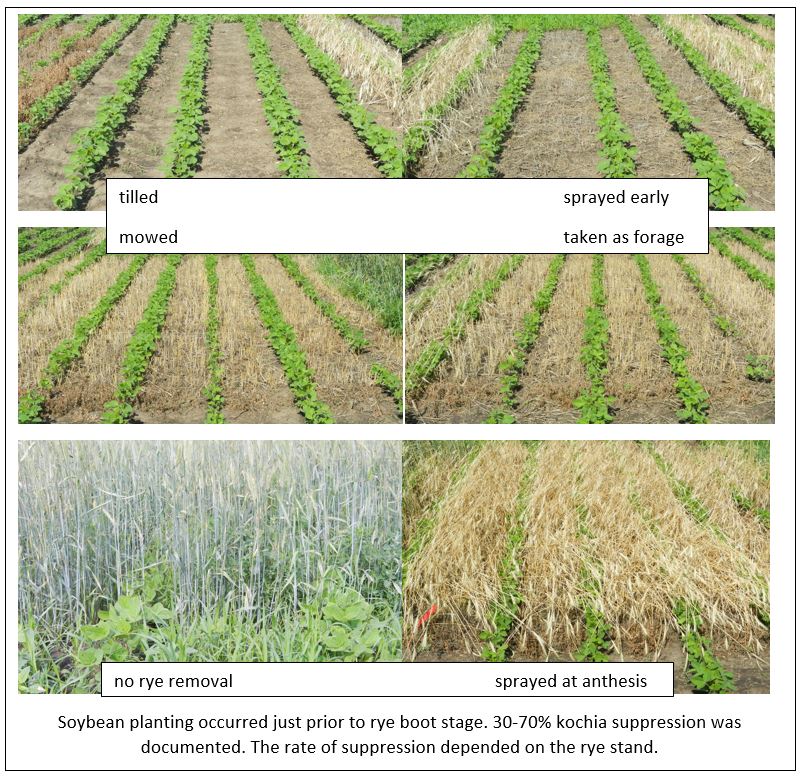Re-evaluating Winter Rye
Over the past two seasons, we have been taking another look at winter rye and how it fits in with our established cropping systems in North Dakota. Due to its early maturing nature, thick canopy, and broadleaf weed suppressing ability (allelopathy), we have found a good synergy between winter rye and soybeans produced during the same growing season. The goal of much of this research has been evaluating how to best use rye before and after soybean planting to maximize production of both crops and/or get multiple benefits from those same acres. Here is a list of reasons why these crops “play nice” together:
Rye Soybeans
Early maturing Can be planted late
Cool season Warm season
Early canopy establishment Mid-late summer canopy
Moderately salt tolerant Salt sensitive
Broadleaf weed suppression Herbicide resistant weeds grow in soybeans
Resistant to soybean planting operation Appears unaffected by rye after planting
One major focus of the study is to determine the best method and timing for rye removal. In our study we do the following:
- Tillage (disking may be the best) prior to soybean planting
- Glyphosate burndown prior to soybeans planting
- Mowing the rye at anthesis – after soybean planting
- Taking the rye as a forage at anthesis – after soybean planting
- Applying glyphosate at anthesis – early post-emergent soybean timing
- Harvesting the rye as grain – harvesting the soybeans as grain later too.
We will determine which combination of removal methods and timings will 1. Provide the best weed control and 2. Provide the greatest returns for both crops. We’ve had good luck producing these crops together the last few years and hope to have more data generated over the next two years to determine the feasibility of each combination. Here are a few photos of what we are seeing.
Sourcing winter rye seed:
Due to the recent interest in winter rye, demand for seed is increasing. Rye seed can be difficult to source locally as few people produce seed at this time and no certified rye has been planted in North Dakota since 2004. Certified seed can still be sourced from other states by searching through their respective State Certification list of seed growers. Common seed can be purchased by local producers although variety purity may be unknown. Rye can also be purchased through seed houses, although careful selection is needed as many times it is listed as VNS (variety not stated) and the winter survival may not be suited for North Dakota. Currently, an experimental line of winter rye is being developed by NDSU at the CREC with the hopes of releasing an adapted variety that will be available to producers in the future.

Mike Ostlie
Agronomist
Steve Zwinger
Agronomy Research Specialist


